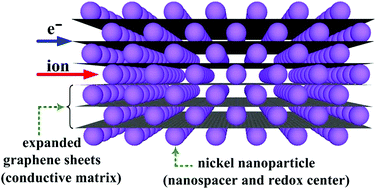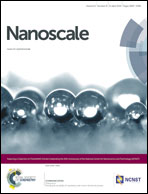Electrophoretic self-assembly of expanded mesocarbon microbeads with attached nickel nanoparticles as a high-rate electrode for supercapacitors†
Abstract
Expanded mesocarbon microbeads (EMCMBs) with graphene oxide (GO) sheets were prepared by expanding graphitized mesocarbon microbeads (MCMBs) using a simple solution-based oxidative process. EMCMB-supported nickel nanoparticles with an average size of 4.6 nm were fabricated by an electrophoretic deposition (EPD) method in the presence of nickel nitrate additive. Nickel ions were self-assembled on the fluffy GO sheets resulting in a more positively charged EMCMB particle for facilitating EPD and dispersion. After heat treatment at 300 °C, GO could be converted to graphene which could provide a conductive network for facilitating the transport of electrons. Well-dispersed nickel nanoparticles on graphene sheets could act as a redox center to allow storage of extra charge and a nanospacer to prevent the graphene sheets from restacking. The specific capacitance of EMCMB-supported nickel electrode could reach 491 F g−1, which is much higher than that of EMCMB electrode (43 F g−1) and bare nickel electrode (146 F g−1) at a discharge current of 5 A g−1. More importantly, the EMCMB-supported nickel electrode is capable of delivering a high specific capacitance of 440 F g−1 at a discharge current of 50 A g−1, and could pave the way towards high-rate supercapacitors.


 Please wait while we load your content...
Please wait while we load your content...